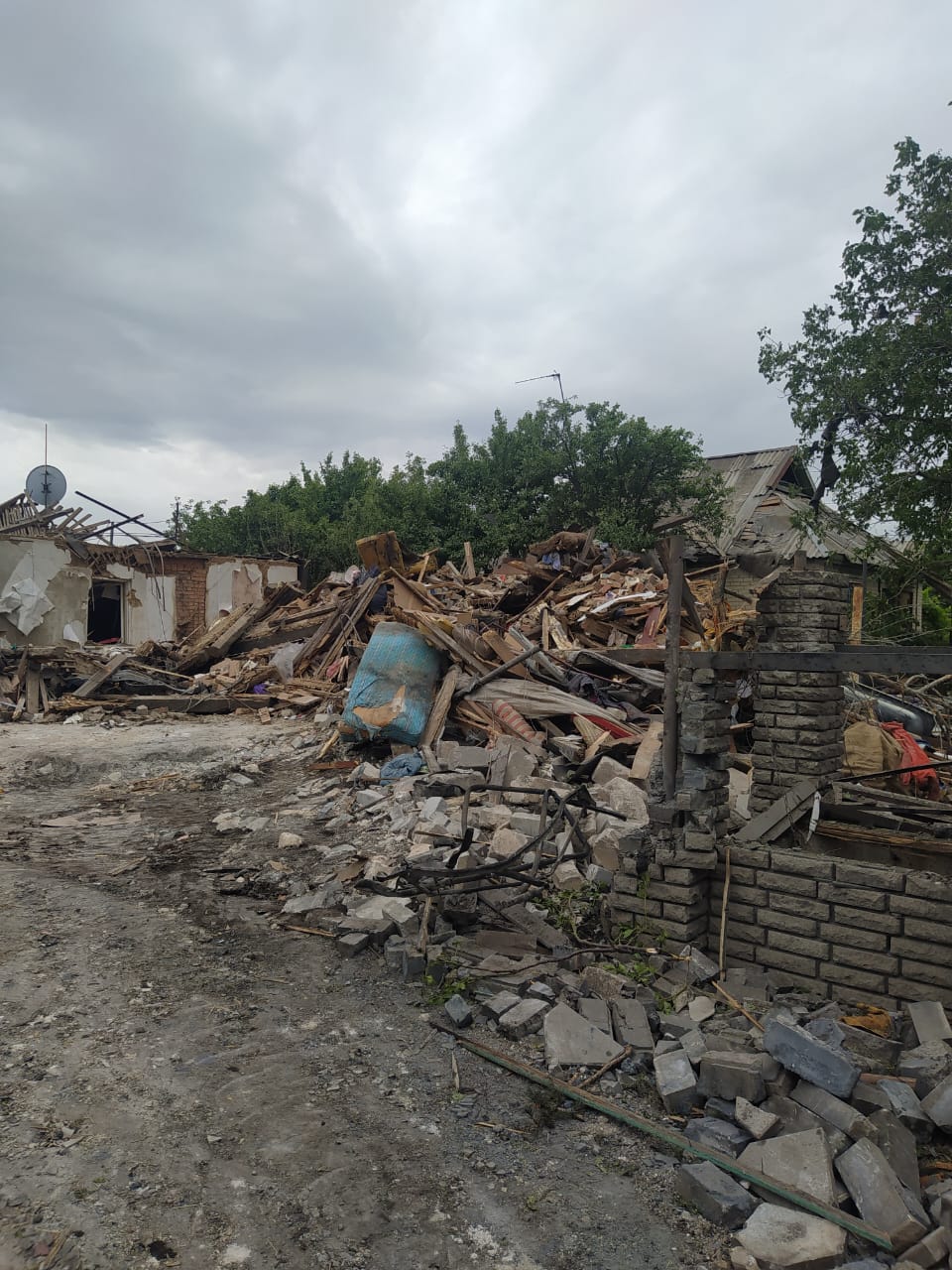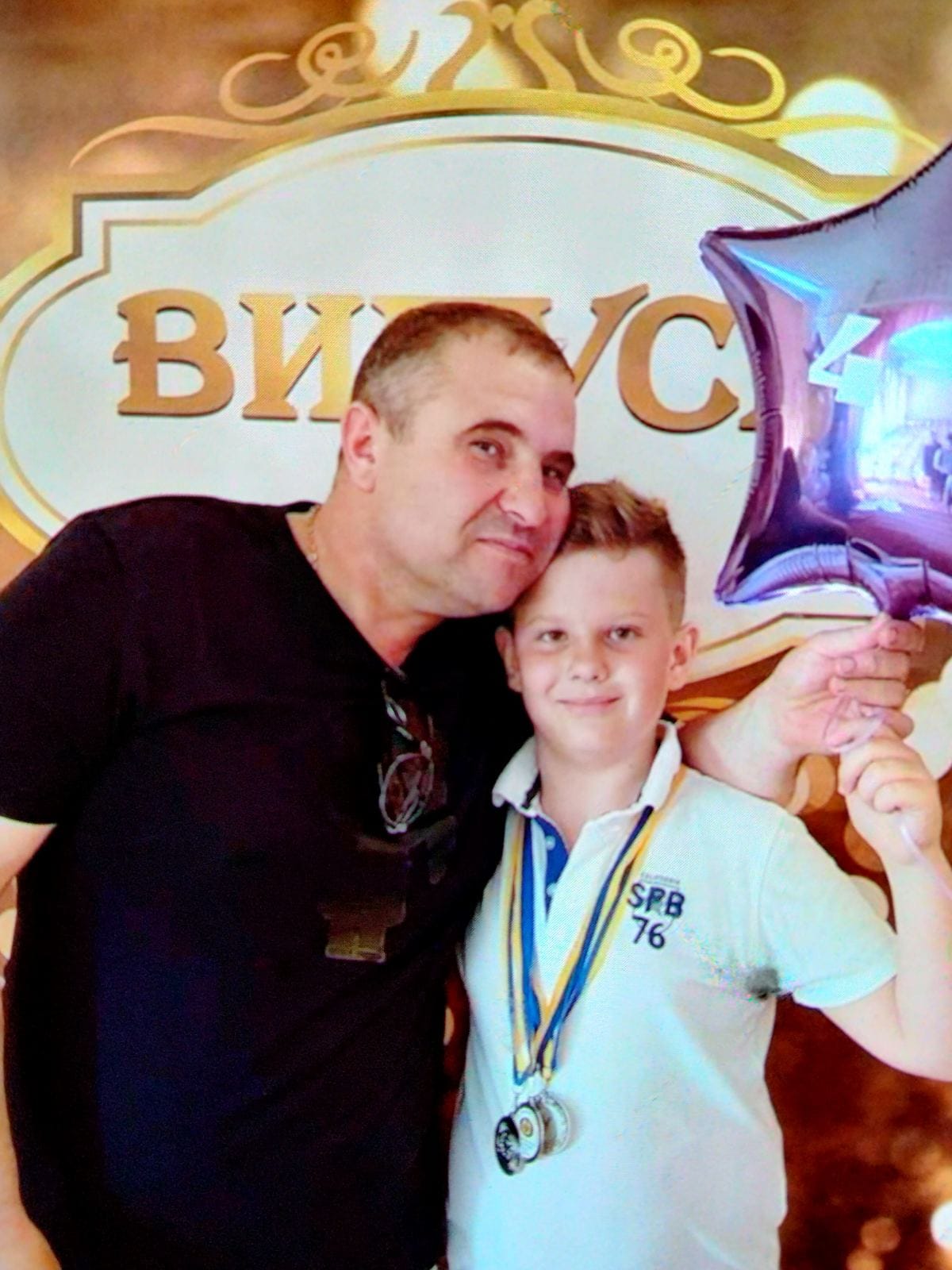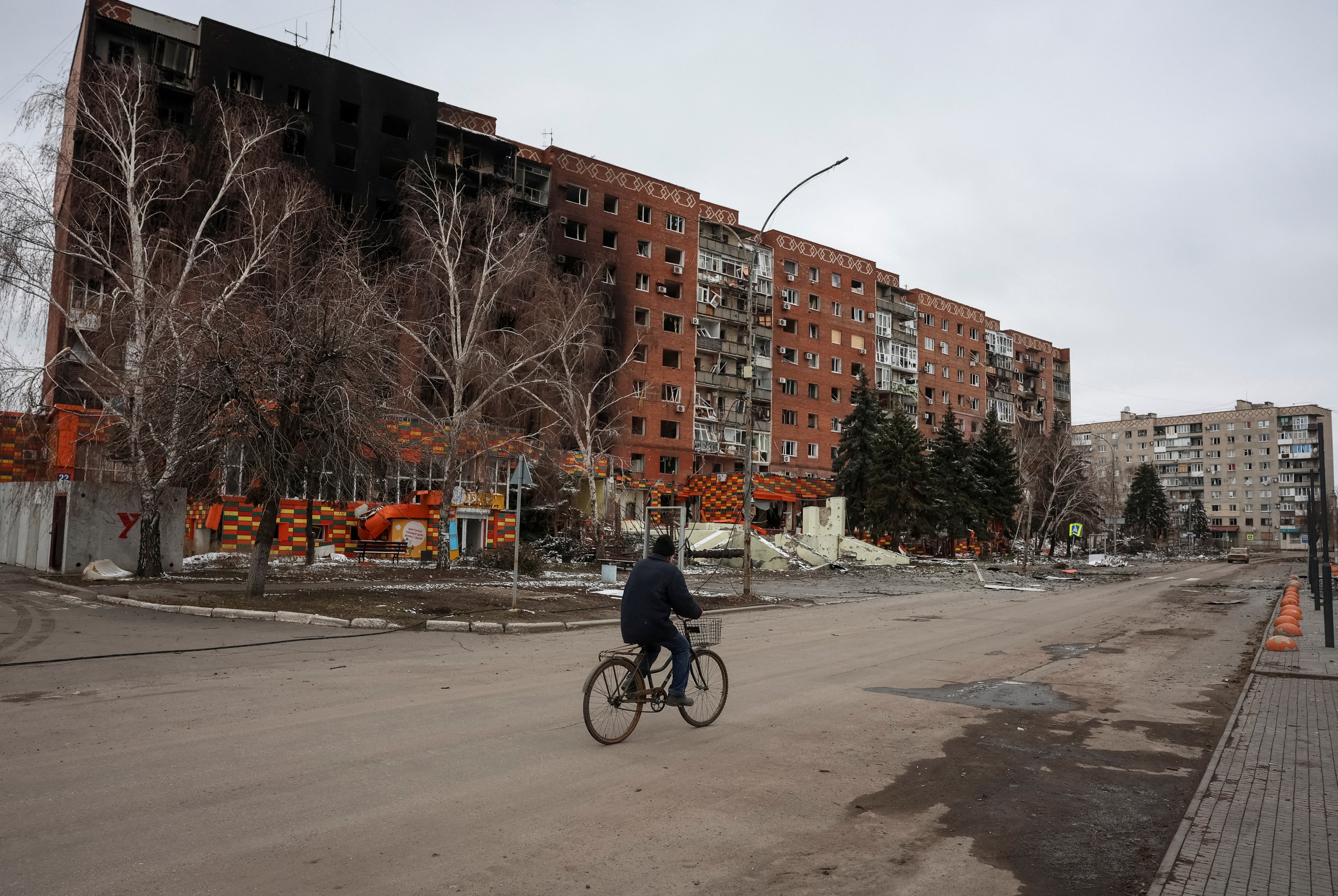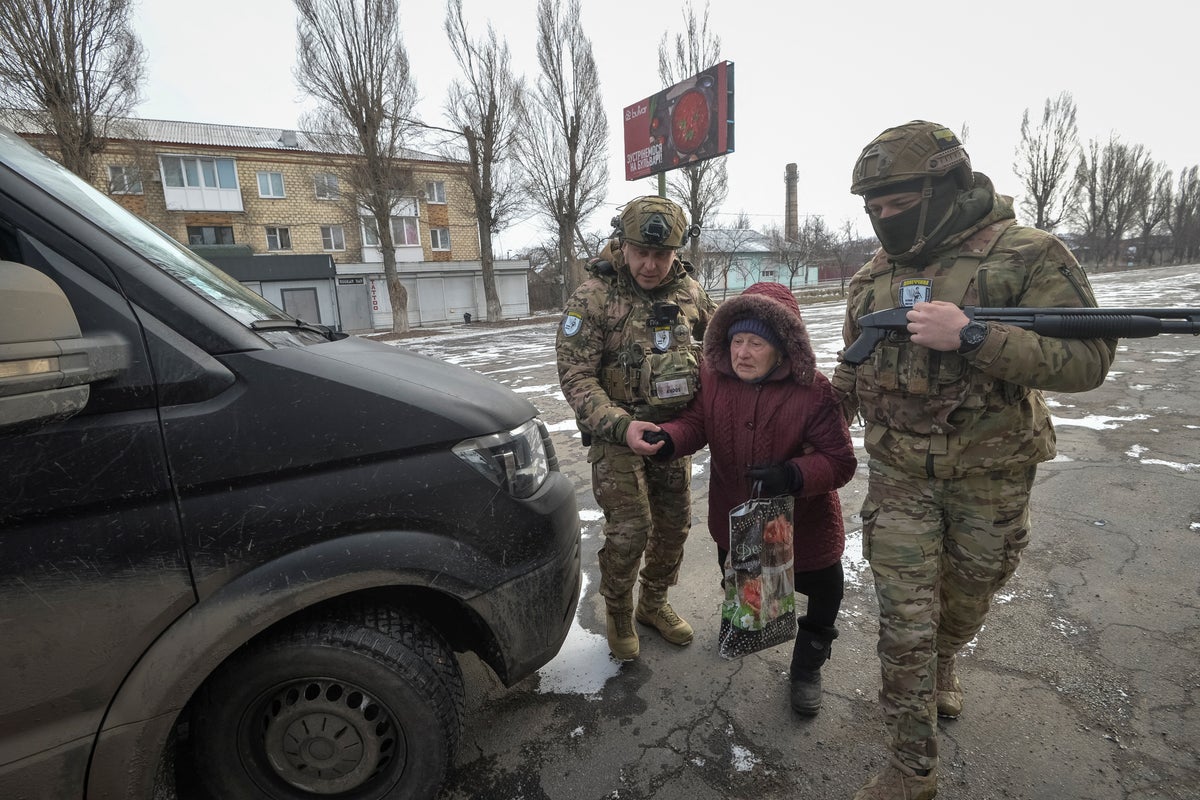Yulia Checheta was at her elderly mother’s house when she popped out to check on her shop. Moments later she had a call to say the family’s home had been hit by two Russian missiles.
Her brother Volodymyr Radko and his 13-year-old son Mykola had been playing on the swings in the garden when the bombs hit. They died instantly, buried beneath the rubble. It would be months before their remains could be identified.
Yulia’s 74-year-old mother, Nina, somehow survived, but she was hospitalised for several weeks with severe bruising to her neck and face.

Half an hour before the strike, all four had been having breakfast in the kitchen.
The family’s tragedy took place in the small city of Selydove in eastern Ukraine’s Donetsk region, through which Russian forces have been steadily advancing for a year. Russia has captured hundreds of square miles of land since seizing the city of Avdiivka last February, swallowing up town after town, forcing hundreds of thousands of civilians in their path to flee or risk a similar fate to that of Yulia’s family.
Selydove was home to a small, tightly knit community. Many of the 20,000 pre-war population declined to leave despite the intermittent Russian missile and drone attacks. Others, like teenager Mykola and his mother, had left at the outset of the war but returned the following year.
“Everyone who I cared about was all the same in the vicinity,” Yulia says. “And we didn’t have anywhere to go.”
But that changed the day Volodymyr and Mykola were killed. It was 28 May 2024, the day Vladimir Putin’s army, which he says he sent there to protect Russian-speakers, killed Yulia’s Russian-speaking family.

A few months later, in October, after Yulia and her mother had fled 150 miles to the “alien” town of Kamianse in the neighbouring Dnipropetrovsk region, Russian forces captured Selydove.
“I cannot possibly convey to you the amount of grief Russia has caused my family,” says Yulia.
She and her mother are desperate to go home. There are few jobs around in Kamianse, and the 45-year-old says she is “struggling to make a living”. There is little recourse to financial support. She is away from all her friends. She is finding it difficult to look after her mother, too.
“If Ukraine were to regain control, we would go back,” she says. “Even if there was no electricity or water, we would go back in an instant, because we miss our home.”
But Ukraine is unlikely to achieve this. It has been on the back foot for a year in Donetsk, outnumbered and often outgunned. A Ukrainian attack on the Russian border region of Kursk last August dealt a blow to Putin, but it did not force his army to divert its advancing troops in Donetsk up to the border, as had been hoped.
Now, Selydove faces the stark possibility of being trapped behind a more permanently frozen front line.
Against the backdrop of US president Donald Trump reopening communication with Putin in the name of stopping the war, Russia’s forces are continuing to advance the front line deeper into Ukraine in the knowledge that Kyiv will be forced to cede at least some of the territory the Kremlin’s troops have captured.
The jewel in this attack is Pokrovsk, some 10 miles beyond Selydove. It is a linchpin of the region’s defences, sitting on key logistics lines supplying the wider area, and its loss could open up Donetsk to further Russian attacks.
Between 5,000 and 7,000 civilians, most of whom are elderly or disabled, remain in Pokrovsk from a pre-war population of 60,000. They survive in freezing, unlit basements with no electricity, living off humanitarian aid, at the mercy of relentless Russian glide-bomb and drone attacks.
Like Yulia, they do not want to leave, because their whole lives are in Pokrovsk.
Nonetheless, a mass exodus began last summer when, in one month, the population dropped from 48,000 to just 16,000, according to local officials. It was the same month that Russia advanced at its quickest pace since the start of the full-scale invasion. When The Independent visited the city during that period, the sound of explosions was constant.
Last month, the Russians began marching up the city’s left flank, taking the town of Kotlyne just a few miles away. It is the last stop on the railway line connecting the city to the safety of the unoccupied regions to the west. Its capture amounted to the loss of a key supply line.
The Centre for Defence Strategies, a Ukrainian security think tank, says the Russians have begun attempting to “advance along the railway line”.
The capture of Kotlyne also brought the Russians closer to one of the last remaining highways into Pokrovsk – the E50, a couple of miles to the north – the loss of which would significantly complicate Ukrainian logistics.
Pokrovsk’s encirclement is a mirror image of what happened to Selydove five months ago, when it was surrounded from east to west before being taken over.
Any vehicles coming into Pokrovsk, whether military or civilian, are being targeted by Russian drones. A 28-year-old British medic, Edward “Eddy” Scott, recently lost his left arm and leg after a drone hit his van while he was driving into the city.

He told The Independent that entering the city had become more dangerous with each rescue mission before he was eventually wounded.
“As long as I was working in Pokrovsk, I was saying, ‘Someone’s going to die,’” he said. “And it should have been me. But I got lucky.”
Only a Ukrainian police unit called the White Angels, a specialist evacuation unit, is still entering the city to rescue the remaining citizens.
Photos of its latest visit show desperate attempts to convince the remaining residents to leave. Every other house appears damaged, blackened by the explosion of a Russian missile.
Yevyhen Bondarenko, an aid worker for the International Rescue Committee, says the house they were operating out of in Pokrovsk “no longer exists”.
His team are now working from Dobropillia, around 12 miles back from Pokrovsk, providing financial aid to hundreds of civilians in the wider area.
It is the closest they are allowed to go. Their headquarters in Dnipro are a three-hour drive away.
When he asks civilians why they do not leave the towns and villages around Pokrovsk, their answer is often the same: home is home, even if it’s bombed. Some have even come back after initially fleeing.
“Those are my spoons and cutlery and I am not going anywhere,” one elderly civilian recently told him.
But he says there is a growing sense of doom spreading across the area with each day of Russia’s advances. “You can feel it in the air,” he says. “You can feel the fear.”

Every second person he sees breaks down when they receive their financial aid, Yevyhen says, and they have to be calmed down and given water. “I’m used to seeing crying women,” he says. “But now I’m seeing more and more crying men.”
As the Russians inch closer to Pokrovsk, civilians well behind the front line are now evacuating in greater numbers. It may be too late for those still in the city.
“If we were discussing this topic a few months ago, most internally displaced people [IDPs] would have been coming from the Donetsk region, from Pokrovsk and Myrnohrad [the neighbouring city],” says Yevyhen. “Now, we are even talking about IDPs from Zaporizhzhia, Dnipro, the areas bordering the combat zones.”
Even local aid agencies as far back as Dnipro have started preparing to move should the Russian advance quicken, he adds.
While the likelihood of a major Russian advance beyond Donetsk seems dim – a takeover of Pokrovsk would be significant, but the pace of Russia’s attack is poor for such a well-equipped military – for many Ukrainian civilians in the face of these marching troops, the risk is not worth it.
Their lives have already been irretrievably upended.
For many others, like Yulia, their lives have been destroyed.





